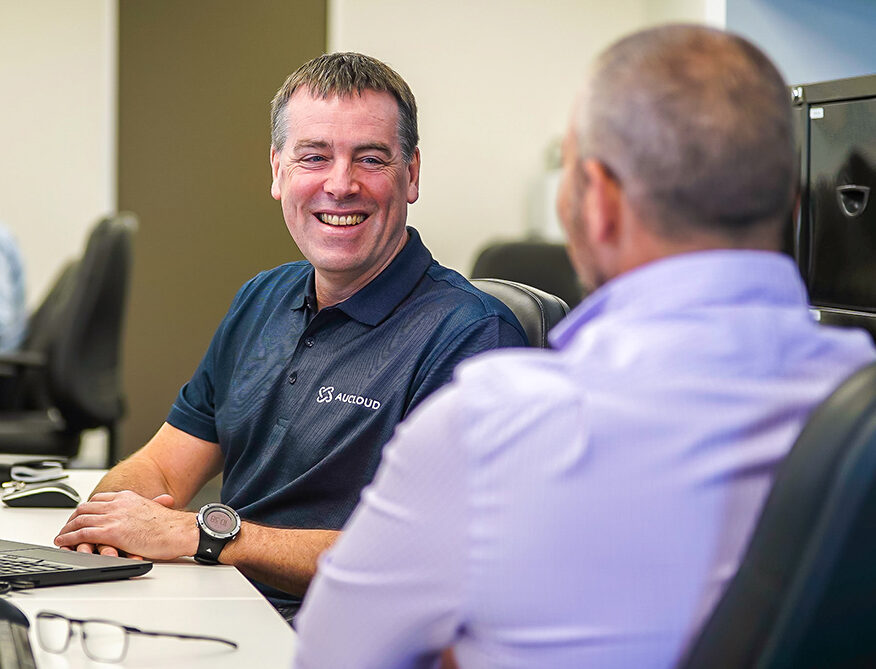How have Australian workplaces coped with COVID? Will things go back to normal?
What strikes me most about COVID is the irrefutable agility and value of cloud services to deliver business continuity when it’s needed most. That AUCloud could stand up within one week, a virtual desktop to support around 20,000 students and staff at the Australian National University — letting them remotely access their teaching labs — immediately vindicated the ANU’s investment. An otherwise six-month project, including access to 120 applications, was operational within six days. This isn’t just about reduced costs
from charging services over a shorter timescale; it’s also the five months and 24 days of additional time that the project outcome is operational and the value that creates. Here, and for customers turning to compute-as-a-service to enable effective remote working, the agility of cloud services literally
kept them in business. There is no going back.
What more can governments do to counter cyber attacks?
The answer is straightforward: government agencies simply need to implement/integrate world-leading technologies in alignment with the ACSC’s clear, unambiguous best practice advice. This includes the requirements of the Information Security Manual, the Protective Security Policy Framework and the new Cloud Assessment and Authorisation Framework — underpinned by the integrity of an effective IRAP process. It really is as simple as that.
How will IT improve operational efficiency in 2021, and who should lead the charge?
Every efficiency-conscious CEO and CIO must start acknowledging the role of cloud in driving tech costs down and work efficiency up. Cloud service solutions compress massive inefficiencies from traditional approaches through economies of scale that improve asset utilisation; DevSecOpsorientated automation and orchestration; and standardisation of design and operations.
The significant efficiencies that can be achieved across the end-to-end digital native design, development, deployment and operating cycle saves time and delivers sustainable cost reductions; the ability to literally do more with less.
How can IT be more environmentally friendly, socially responsible and privacy conscious?
It’s time the environmental benefits of cloud technology are factored into the cloud value equation. Cloud services are premised on the virtualisation of software to create virtual (rather than physical) versions of operating systems, servers, storage devices etc. The more efficient use of a reduced physical infrastructure footprint significantly reduces carbon emissions. This is fundamental to how we operate at AUCloud.
What’s on your wish list from government, industry and innovators?
Pretty much what it has been for the last few years — that government and industry understand the economic, security and adaptability benefits of cloud-based infrastructure and applications. Nothing is more powerful in today’s fast-paced, mission-critical world than the ability to develop and rapidly deploy applications premised on cloud/digital native platforms and principles.
API-centric, containerised micro-service applications deployed on standards-based cloud infrastructure underpinned by smart automation are key to enhancing Australia’s sovereign resilience. They address the immediate imperative government faces resulting from COVID — the need to deliver innovative, sustainable services despite increasingly constrained budgets. They are also the modern pillar on which to architect and build the capabilities government requires to do its job more cost-efficiently and quickly, on platforms that are more resilient, responsive and adaptive.

Managing DIRECTOR
Phill Dawson
Phil Dawson is Managing Director of AUCloud, aleading sovereign cloud IaaS provider exclusively supporting the requirements of ustralian Government and CNI organisations. He was formerly co-founding CEO of UKCloud, a leading provider of IaaS to UK government and the fastest-growing technology business in the UK 2012–15.



